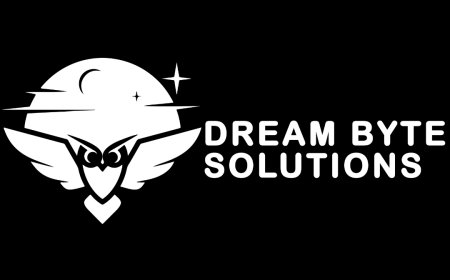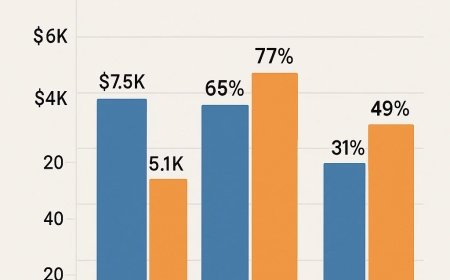Collimating Lens Market Current Scenario, Growth Factors, and Trends
"Executive SummaryCollimating Lens Market:
Data Bridge Market Research analyses the collimating lens market will exhibit a CAGR of 5.77% for the forecast period of 2021-2028 and is expected to reach the USD 506.09 million by 2028.
In this Collimating Lens Marketreport, industry trends are formulated on macro level which assists comprehend market place and possible future issues. The report gives details about the emerging trends along with key drivers, challenges and opportunities in the industry. The report explains the moves of top market players and brands that range from developments, products launches, acquisitions, mergers, joint ventures, trending innovation and business policies. Geographical areas such as North America, South America, Europe, Asia-Pacific and Middle East & Africa are also considered for the market analysis. Collimating Lens Marketreport can be utilized efficiently by both established and new players in the industry for absolute understanding of the market.
This Collimating Lens Marketresearch report describes the major moves of the top players and brands such as developments, product launches, acquisitions, mergers, joint ventures and competitive research in the market. This is a professional and in-depth study on the current state which focuses on the major drivers and restraints of the key market players. The Collimating Lens Marketreport provides a great understanding of the current market situation with the historic and upcoming market size based on technological growth, value and volume, projecting cost-effective and leading fundamentals in the market.Analysis and discussion of important industry trends, market size, and market share estimates are revealed in the Collimating Lens Marketreport.
Discover the latest trends, growth opportunities, and strategic insights in our comprehensive Collimating Lens Market report. Download Full Report:https://www.databridgemarketresearch.com/reports/global-collimating-lens-market
Collimating Lens Market Overview
**Segments**
- By Type: Aspheric Lens, Cylindrical Lens, Axicon Lens, Other
- By Material: Glass, Plastic
- By End-Use Industry: Healthcare, Electronics, Automotive, Aerospace & Defense, Others
The global collimating lens market is segmented based on type, material, and end-use industry. In terms of type, the market is categorized into aspheric lens, cylindrical lens, axicon lens, and others. Aspheric lenses are commonly used for their ability to correct spherical aberrations, while cylindrical lenses are utilized for applications requiring focusing or collimating light in one dimension. Axicon lenses are designed to convert collimated laser beams into ring-shaped intensity profiles, suitable for various applications such as optical trapping and microscopy. The market is further segmented by material into glass and plastic, with glass lenses providing high optical clarity and temperature resistance, while plastic lenses offer cost-effective solutions for certain applications. In terms of end-use industry, the collimating lens market caters to sectors such as healthcare, electronics, automotive, aerospace & defense, and others, each with specific requirements for collimation technologies.
**Market Players**
- LightPath Technologies Inc.
- INGENERIC GmbH
- Ocean Optics Inc.
- Trioptics GmbH
- Sunex Inc.
- Knight Optical
- ASPHERICON, INC.
- Auer Lighting GmbH
- Thorlabs Inc.
- Litech Optics Co., Ltd.
Key players in the global collimating lens market include LightPath Technologies Inc., INGENERIC GmbH, Ocean Optics Inc., Trioptics GmbH, Sunex Inc., Knight Optical, ASPHERICON, INC., Auer Lighting GmbH, Thorlabs Inc., and Litech Optics Co., Ltd. These companies are actively engaged in developing collimating lens solutions that cater to a wide range of applications in industries such as healthcare, electronics, automotive, aerospace & defense, and more. By investing in research and development activities, strategic partnerships, and innovative product offerings, these market players are poised to capitalize on the growing demand for precision optical components worldwide.
The global collimating lens market is experiencing steady growth driven by advancements in optical technology and increasing demand for precision optical components across various industries. One of the key trends shaping the market is the rising adoption of aspheric lenses for correcting spherical aberrations and improving optical performance in applications such as laser systems, imaging devices, and scientific instruments. Aspheric lenses offer superior image quality, reduced weight and size, and enhanced light transmission compared to traditional spherical lenses, making them ideal for critical applications requiring high precision and performance.
Another notable trend in the collimating lens market is the growing use of cylindrical lenses in applications that require shaping or focusing light in a specific direction, such as barcode scanners, laser printers, and optical communication systems. Cylindrical lenses play a crucial role in controlling the orientation and intensity of light beams, making them essential components in various industrial and scientific applications where precise collimation is required. The market is also witnessing an increased demand for axicon lenses, which are designed to generate non-diffracting ring-shaped beams with applications in optical tweezers, beam shaping, and laser material processing.
In terms of materials, glass lenses continue to dominate the collimating lens market due to their superior optical properties, including high clarity, thermal stability, and resistance to environmental factors. Glass lenses are commonly used in high-end optical systems where image quality and precision are paramount, such as in medical devices, cameras, and laser processing equipment. On the other hand, plastic lenses are gaining traction in cost-sensitive applications where affordability and lightweight design are key considerations. Plastic lenses offer advantages such as lower production costs, flexibility in design, and resistance to impact, making them suitable for applications in consumer electronics, automotive lighting, and general illumination.
The end-use industry segmentation of the collimating lens market highlights the diverse applications and requirements across different sectors. In the healthcare industry, collimating lenses are used in medical imaging systems, diagnostic devices, and surgical equipment to ensure accurate detection and treatment of various conditions. In the electronics sector, collimating lenses play a crucial role in laser diode modules, optical sensors, and projection displays, enabling precise light control and performance optimization. The automotive industry utilizes collimating lenses in head-up displays, LiDAR systems, and adaptive headlights to enhance visibility, safety, and driver experience. In the aerospace and defense sector, collimating lenses are integral components in targeting systems, surveillance cameras, and missile guidance systems, where precision, reliability, and durability are essential.
Overall, the global collimating lens market is poised for continued growth driven by technological advancements, increasing automation, and the expanding application scope across diverse industries. Market players are focusing on innovation, product differentiation, and strategic collaborations to meet the evolving demands of customers and capitalize on emerging opportunities in the market. With a strong emphasis on quality, performance, and customer satisfaction, key players in the collimating lens market are well-positioned to drive growth and innovation in the global optical components industry.The global collimating lens market is undergoing significant growth due to the increasing demand for precision optical components driven by advancements in optical technology across various industries. Key trends in the market include the rising adoption of advanced collimating lens types, such as aspheric lenses, cylindrical lenses, and axicon lenses, each catering to specific applications requiring precise light control and manipulation. Aspheric lenses are gaining popularity for their superior performance in correcting spherical aberrations and improving optical quality in critical applications like laser systems and imaging devices. Cylindrical lenses are essential for shaping light beams in one dimension, while axicon lenses are used for generating non-diffracting ring-shaped beams for applications such as optical tweezers and laser material processing.
Furthermore, the market is witnessing a shift towards the utilization of different materials for collimating lenses, with glass lenses dominating the market due to their exceptional optical properties, thermal stability, and resistance to environmental factors. Glass lenses are preferred for high-end optical systems in sectors like healthcare and aerospace & defense where precision and reliability are paramount. On the other hand, plastic lenses are gaining traction in cost-effective applications across industries such as consumer electronics and automotive, where lightweight design and affordability are critical factors influencing purchasing decisions.
The diverse end-use industry segmentation of the collimating lens market highlights the wide range of applications and specific requirements across various sectors. In the healthcare industry, collimating lenses are utilized in medical imaging systems and surgical equipment to ensure accurate diagnostics and treatment procedures. The electronics sector relies on collimating lenses for laser diode modules and optical sensors to optimize performance and light control in devices. Automotive applications of collimating lenses include head-up displays and LiDAR systems to enhance visibility and safety features in vehicles, while the aerospace & defense industry uses collimating lenses in targeting systems and surveillance equipment for precision and durability in critical operations.
Overall, the global collimating lens market is poised for sustained growth supported by technological advancements, increasing automation, and the expanding application scope across industries. Market players are investing in research and development activities to introduce innovative products and solutions catering to evolving customer demands. Strategic collaborations and partnerships are crucial for driving market growth and unlocking new opportunities in the global optical components industry. With a focus on quality, performance, and customer satisfaction, key players in the collimating lens market are well-positioned to lead innovation and drive advancements in optical technologies worldwide.
The Collimating Lens Market is highly fragmented, featuring intense competition among both global and regional players striving for market share. To explore how global trends are shaping the future of the top 10 companies in the keyword market.
Learn More Now:https://www.databridgemarketresearch.com/reports/global-collimating-lens-market/companies
DBMR Nucleus: Powering Insights, Strategy & Growth
DBMR Nucleus is a dynamic, AI-powered business intelligence platform designed to revolutionize the way organizations access and interpret market data. Developed by Data Bridge Market Research, Nucleus integrates cutting-edge analytics with intuitive dashboards to deliver real-time insights across industries. From tracking market trends and competitive landscapes to uncovering growth opportunities, the platform enables strategic decision-making backed by data-driven evidence. Whether you're a startup or an enterprise, DBMR Nucleus equips you with the tools to stay ahead of the curve and fuel long-term success.
Key Benefits of the Report:
- This study presents the analytical depiction of the global Collimating Lens Market Industry along with the current trends and future estimations to determine the imminent investment pockets.
- The report presents information related to key drivers, restraints, and opportunities along with detailed analysis of the global Collimating Lens Market
- The current market is quantitatively analyzed to highlight theCollimating Lens Marketgrowth scenario.
- Porter's five forces analysis illustrates the potency of buyers & suppliers in the market.
- The report provides a detailed global Collimating Lens Market analysis based on competitive intensity and how the competition will take shape in coming years.
Browse More Reports:
Global Gas Phase Filtration Market
West Africa Dairy Protein Ingredients Market
Global Plastic Fencing Market
Global Railway Management System Market
Global Cerebrospinal Fluid (CSF) Management Market
Global Door Phone Market
India Healthcare Information Technology (IT) Market
Global Point of Sale System Requirement Market
Global Spinal Allografts Market
North America Dental Membrane and Bone Graft Substitute Market
Europe Meat, Poultry and Seafood Processing Equipment Market
Global Ship Bridge Simulators Market
Global Zinc Supplement Market
Global Smart Packaging Market
Global Communication Air Traffic Control Equipment Market
About Data Bridge Market Research:
An absolute way to forecast what the future holds is to comprehend the trend today!
Data Bridge Market Research set forth itself as an unconventional and neoteric market research and consulting firm with an unparalleled level of resilience and integrated approaches. We are determined to unearth the best market opportunities and foster efficient information for your business to thrive in the market. Data Bridge endeavors to provide appropriate solutions to the complex business challenges and initiates an effortless decision-making process. Data Bridge is an aftermath of sheer wisdom and experience which was formulated and framed in the year 2015 in Pune.
Contact Us:
Data Bridge Market Research
US: +1 614 591 3140
UK: +44 845 154 9652
APAC : +653 1251 975
Email:-corporatesales@databridgemarketresearch.com"








&srotate=0)























